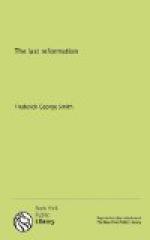The description of the two forms of the apostasy, Papal and Protestant, given in the thirteenth chapter of Revelation, was conveyed under the symbols of two beasts, differing in external appearance, but in certain respects similar in character. Immediately following that representation there is, as we have already shown, a description of a distinct reformatory work set forth by the 144,000 with the Lamb on Mount Zion, the fall of Babylon, and the promulgation of the everlasting gospel in all the world. The term “Babylon” as used in that scripture is applied to both the worshipers of the beast and the worshipers of the image of the beast (made by the second beast); therefore it embraces both forms of the apostasy.
We have just seen that the description of Babylon, given in Revelation 17 under the symbols of a corrupt woman and her harlot daughters, represent the papal church and the divisions of Protestantism. We shall now proceed to show that the two lines of prophecy (chaps. 13 and 17) are parallel chronologically, for they both end at the same time and in the same manner.
[Sidenote: The last reformation]
As the first of these two series of prophecy ended with the fall of Babylon and the deliverance therefrom of a people who were with the Lamb, not wandering after the beast, and who had “the Father’s name written in their foreheads,” not the name or the mark of the beast, so also the second series ends in the same manner. After describing Babylon under its twofold form, mother and daughters, the Revelator says: “After these things I saw another angel come down from heaven, having great power; and the earth was lightened with his glory. And he cried mightily with a strong voice, saying, Babylon the great is fallen, is fallen, and is become the habitation of devils, and the hold of every foul spirit, and a cage of every unclean and hateful bird. For all nations have drunk of the wine of the wrath of her fornication, and the kings of the earth have committed fornication with her, and the merchants of the earth are waxed rich through the abundance of her delicacies. And I heard another voice from heaven, saying, Come out of her, my people, that ye be not partakers of her sins, and that ye receive not of her plagues” (chap. 18:1-4).
A movement of mighty power is symbolized in these verses. The language is based on the experience of the ancient Israelites in literal Babylon, who, when the fall of the city occurred, obtained release from their enforced captivity, and were permitted to return to their own land. The real meaning in this case is clear: that apostate Christianity has been a veritable Babylon in which the true people of God have been held as in captivity, and that the time of their deliverance would come, when they would, by divine authority, be called out. Notice the parallelism in the two descriptions of the fall of Babylon. In chapter 14 an angel declares “Babylon is fallen, is fallen” (verse 8), and the next




